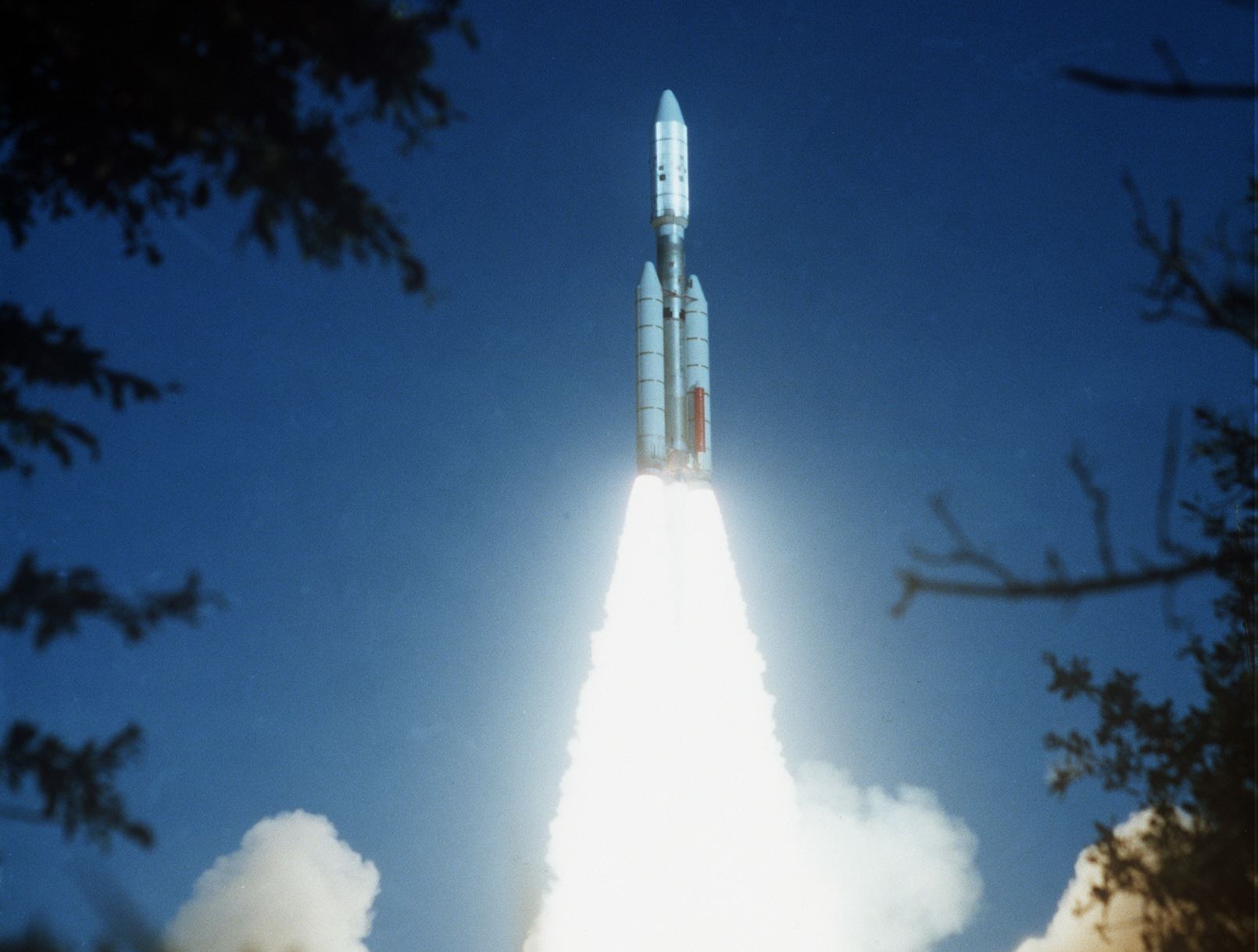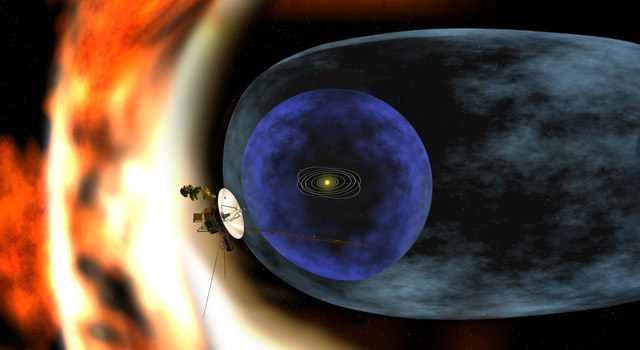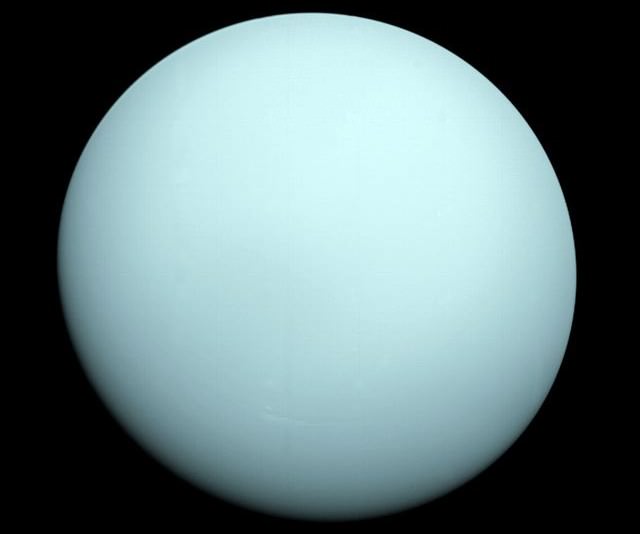[/caption]
Voyager 2 is the only spacecraft that has flown close by one of the more enigmatic planets in our solar system (and the butt of many one-liners): Uranus. It was 25 years ago today (Jan. 24) that Voyager made the close pass, and scientists from JPL have been reminiscing about how they pored over the data being returned by the Grand-Touring Voyagers.
“Voyager 2’s visit to Uranus expanded our knowledge of the unexpected diversity of bodies that share the solar system with Earth,” said Project Scientist Ed Stone, who is now based at the California Institute of Technology in Pasadena. “Even though similar in many ways, the worlds we encounter can still surprise us.”
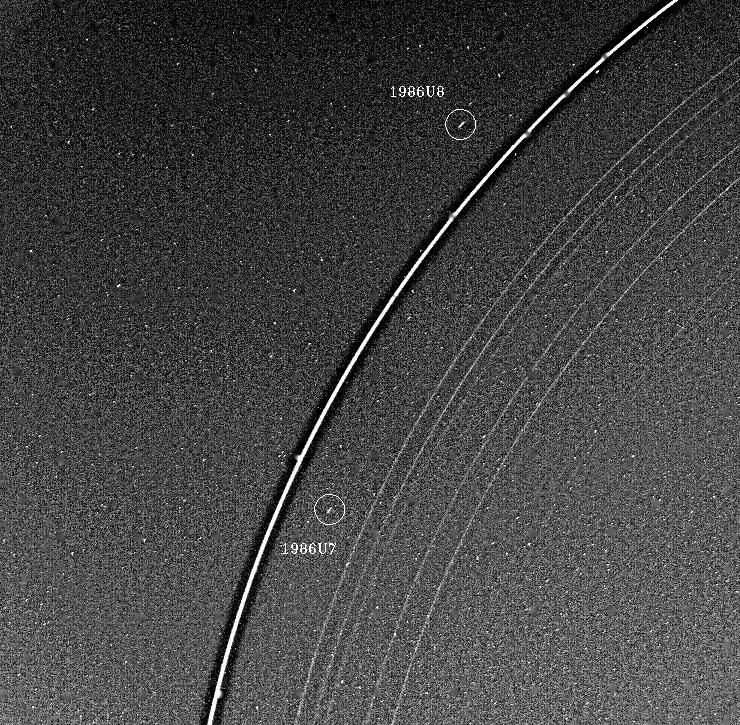
From the flyby, we saw for the first time Uranus’ small group of tenuous rings, and the tiny shepherding moons that sculpted them. Unlike Saturn’s icy rings, they found Uranus’ rings to be dark gray, reflecting only a few percent of the incident sunlight.
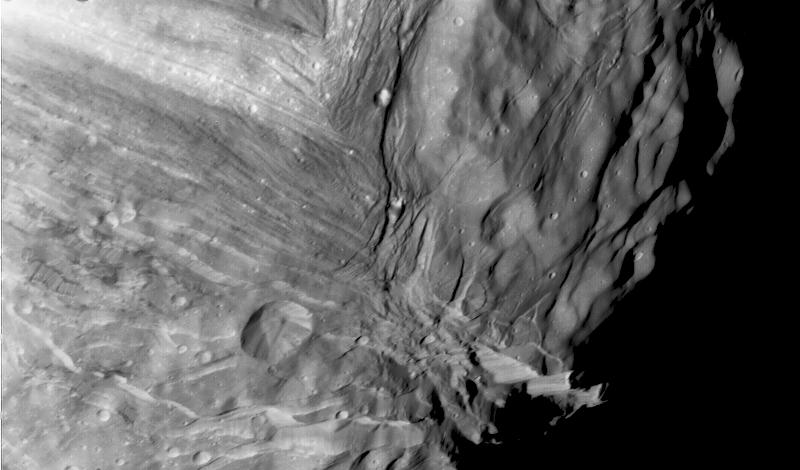
The images also showed the small, icy Uranus moon Miranda that had a grooved terrain with linear valleys and ridges cutting through the older terrain and sometimes coming together in chevron shapes. They also saw dramatic fault scarps, or cliffs. All of this indicated that periods of tectonic and thermal activity had rocked Miranda’s surface in the past.
The scientists were also shocked by data showing that Uranus’ magnetic north and south poles were not closely aligned with the north-south axis of the planet’s rotation. Instead, the planet’s magnetic field poles were closer to the Uranian equator. This suggested that the material flows in the planet’s interior that are generating the magnetic field are closer to the surface of Uranus than the flows inside Earth, Jupiter and Saturn are to their respective surfaces.
Voyager 2 was launched on Aug. 20, 1977, 16 days before its twin, Voyager 1. After completing its prime mission of flying by Jupiter and Saturn, Voyager 2 was sent on the right flight path to visit Uranus, which is about 3 billion kilometers (2 billion miles) away from the sun. Voyager 2 made its closest approach – within 81,500 kilometers (50,600 miles) of the Uranian cloud tops – on Jan. 24, 1986.
By the end of the Uranus encounter and science analysis, data from Voyager 2 enabled the discovery of 11 new moons and two new rings, and generated dozens of science papers about the quirky seventh planet.
Voyager 2 moved on to explore Neptune, the last planetary target, in August 1989. It is now hurtling toward interstellar space, which is the space between stars. It is about 14 billion kilometers (9 billion miles) away from the sun. Voyager 1, which explored only Jupiter and Saturn before heading on a faster track toward interstellar space, is about 17 billion kilometers (11 billion miles) away from the sun.
“The Uranus encounter was one of a kind,” said Suzanne Dodd, Voyager project manager, based at JPL. “Voyager 2 was healthy and durable enough to make it to Uranus and then to Neptune. Currently both Voyager spacecraft are on the cusp of leaving the sun’s sphere of influence and once again blazing a trail of scientific discovery.”
Click on the images above to see higher resolution versions on JPL’s Photojournal website. Or see this link on the Photojournal to see all images of Uranus.


